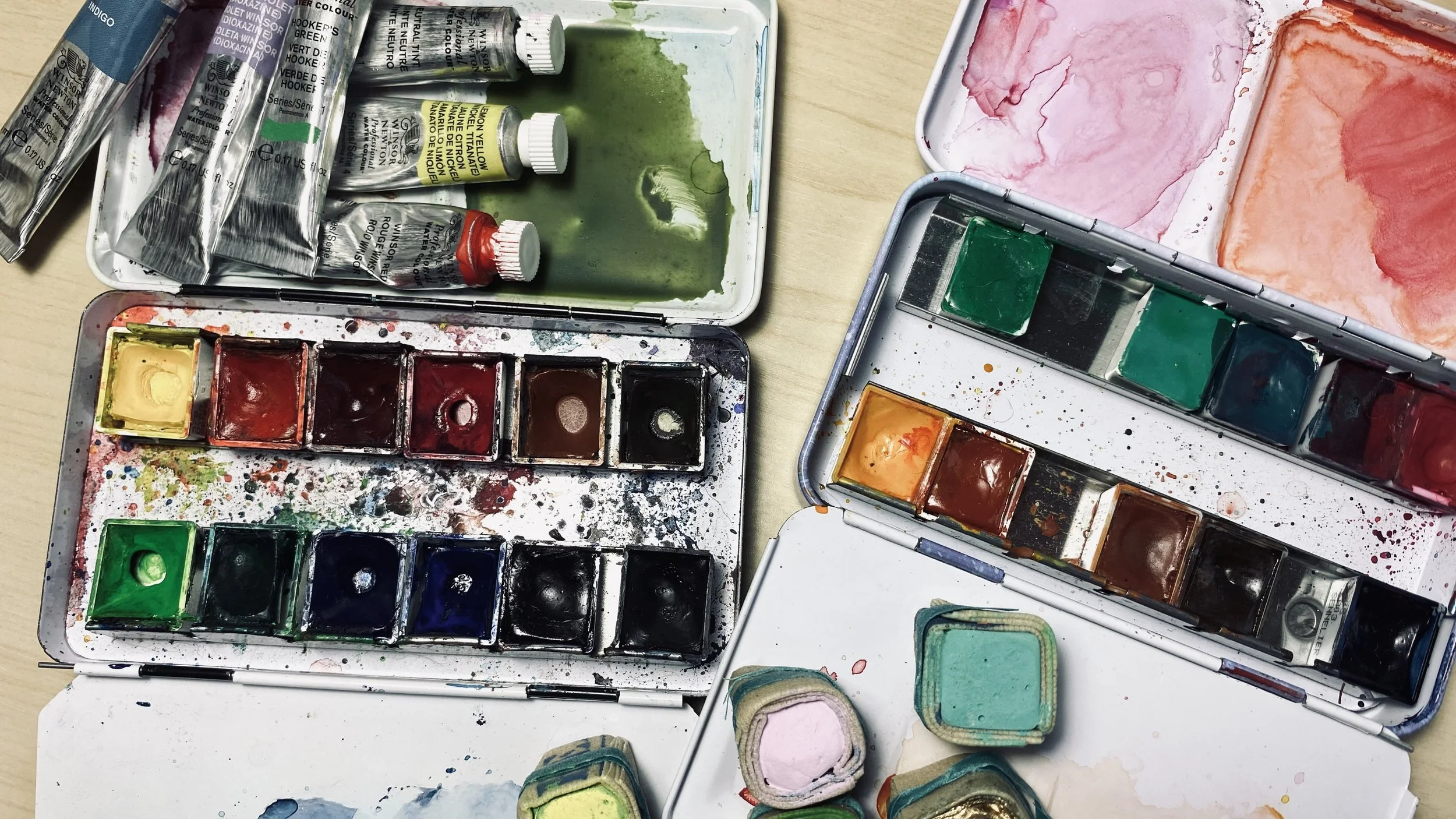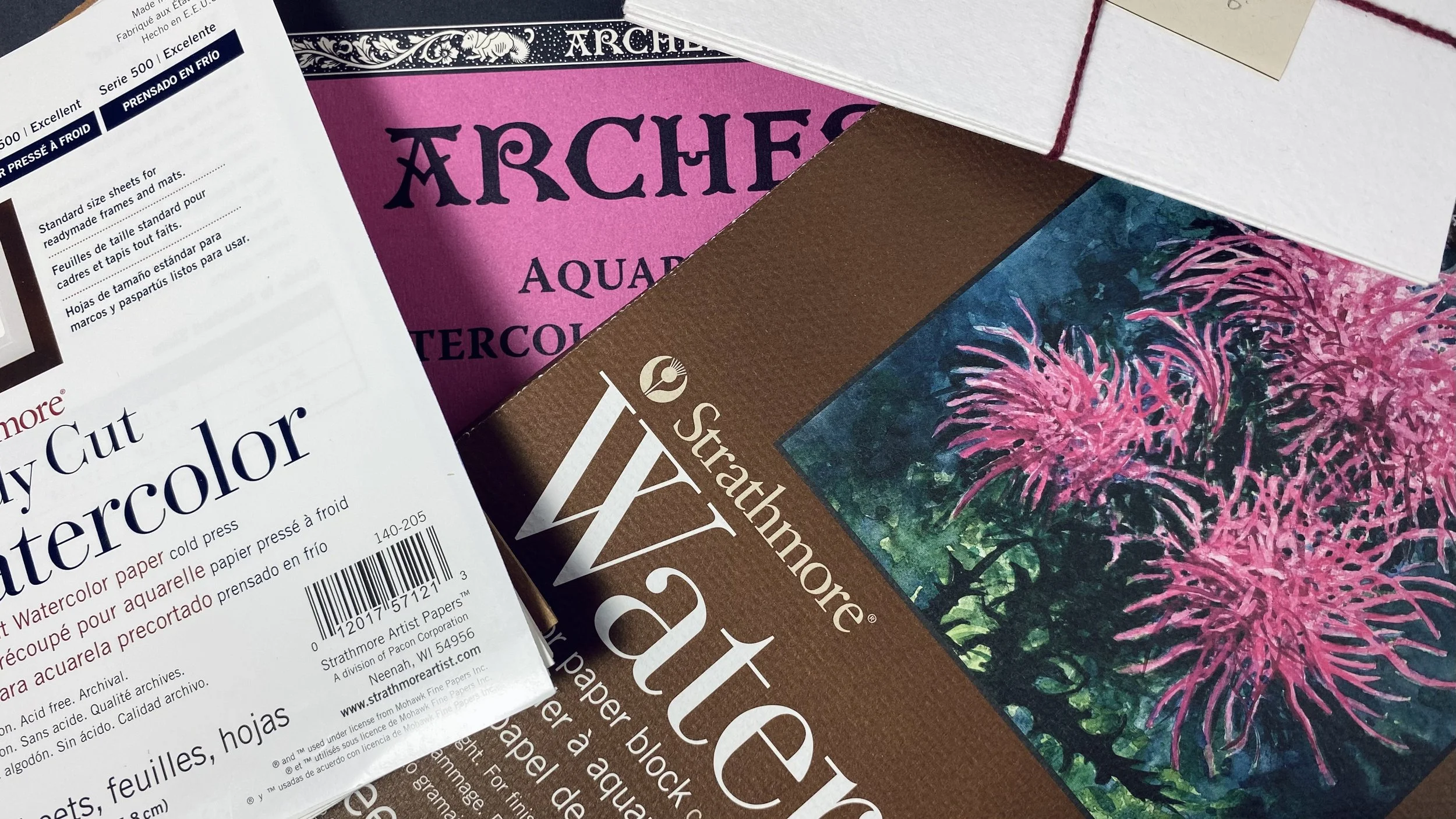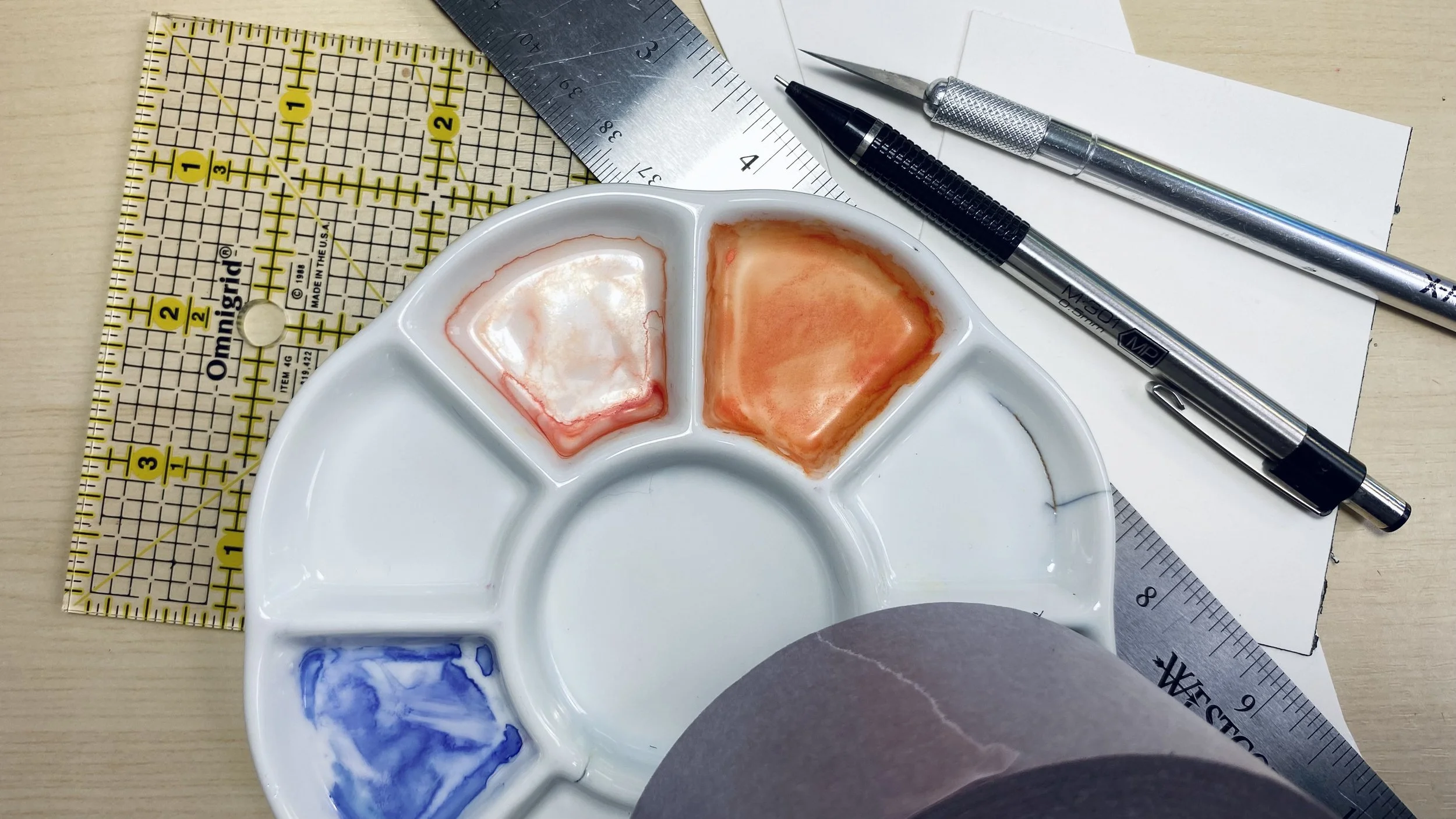A friend recently asked for my suggestions for beginner watercolor supplies, so I thought I'd turn it into a blog post and spread it around to help make the shopping process easier. There are so many amazing products out there that it can be really daunting to make the "right" choices. There aren't many wrong choices, really, it mostly comes down to preference. That's something you'll get to discover for yourself, too! Without further ado, here is what I would buy you if I was going to gift you a beginner's painting set...
All prices are approximate and most links are to Blick. I don’t receive a commission from any of these companies, these are just my tried and tested favorites.
You may be surprised to find that the paints and papers I suggest are not what is considered “student” level or quality. I truly feel that you get the best results with the best products you can afford. If you need to be thrifty, buy a few tubes or half pans at a time (starting with Quinacridone Red, Aureoline, French Ultramarine, Burnt Umber, Raw Umber, Payne’s Gray), put them in a metal travel tin like this one and add more colors as you can. Another way to save is to buy individual inexpensive brushes and replace with higher quality as they wear out.
Paint sets
Watercolor paint is most often bought by the tube or the pan/half pan. I prefer to work with pans. Pans are equivalent to a tube of paint, compressed. They’re a bit more portable, less messy, and pans are reusable. Also, there aren’t the extra steps of setting up a palette. You just open up your tin and go. You can get sets of tubes with the same or similar colors as well for a comparable price if you prefer.
Winsor & Newton Professional Watercolor half pan set, travel tin, set of 12—$75
Sennelier French Artists’ Watercolor half pan set, metal case, set of 12—$79
Brushes
Between these two sets there’s a good variety of brush shapes and sizes. Once you learn what shapes you like you can buy more of your preferred shape in different sizes. Note that there are no filberts, mops, or fans in these sets. They’re not styles I’ve personally found useful, though you can add individual brushes for just a little extra if you choose. There are other sets available in the Princeton Real Value line as well. These brushes are made with taklon not sable. Quality sable brushes are a bit of a splurge and I haven’t made that leap yet, but they’re supposed to be the fine artist’s standard. My current most used brushes are from the Princeton Aqua Elite line.
Surface
There are two routes you can go here: blocks or sheets. Blocks don’t require taping, but will cost you a little more for the convenience. One you add in the cost of tape and a surface, it can even out, though. I use both regularly. Strathmore 400 is my go-to for most projects. It’s an affordable price point and great quality. Saunders Waterford by St. Cuthberts Mill is a step up in quality and my current favorite paper. All of these options are 140#/300g weight paper. Paper under this weight are going to buckle more and will probably need to be flattened out again after painting. This is a whole other blog post, but to do this you can use a light mist of water on the back surface of your painting followed by a warm iron, again, on the back, working gently and slowly raising the heat until you find the sweet spot to ease the buckling out.
Another thing to consider is wether you want hot press or cold press. A quick explanation is that this refers to the texture, or tooth, of the paper. Hot press has a smooth surface that is less absorbent, colors appear richer, and it’s easier to draw on with pen and ink. On the other hand, cold press has a rougher surface that is slightly more absorbent, colors appear less vibrant, and the texture makes it more difficult to use pen and ink. There is also rough, which is basically cold press plus.
Strathmore 400 series watercolor block, 15 sheets, 9x12”—$15
Strathmore 400 series watercolor pad, spiral bound, 12 sheets, 9x12”—$9
Saunders Waterford Watercolor block, cold press, 20 sheets, 9x12"—$33
Saunders Waterford Watercolor pad, cold press, 12 sheets, 9x12”—$26
Other goodies
Scotch Painter's Tape for Delicate Surfaces, 3/4”—$6
If you opt to go for sheets instead of a block you will need tape and a surface to tape down to. I’ve tried many different tapes and this is hands down my favorite. Rarely damages your paper surface like other tapes can. On the down side, its lack of a strong tack means it can pull away from your surfaces. Press firmly to ensure the best bond.
Richeson Hardboard Flat Panel, 11x14”—$3
I admit, this is not a great piece of hardboard, but will get the job done. You can also tape down to a table top—this is how I usually work.
I like to have extra space outside of the travel tin to mix colors. They wash up super easily with just warm water and dish soap. This one is a bit on the larger size, but this company offers a large variety of ceramic palettes.
Watercolor paper scraps—if you’re looking for an exact shade test your color out on a scrap before committing to your painting. Use the same paper you’re working onto—it will look different on hot press versus cold press, and so on.
Good lighting—natural sunlight is best, but a lamp with a neutral bulb (not cool, not warm) is good, too. I have an adjustable lamp over my desk equipped with a 6500K, 13 watt/860 lumens bulb.
Paper towel—to clean up drips, dry your painting surface if it gets too wet, dry your brush, vague color tests.
Kneadable eraser—knead to soften up then roll it over your pencil marks to lighten them up without damaging your paper surface.
Storage—I store my paints and brushes in a cigar box and have a set of IKEA drawers for paper and finished art storage.
Water jar—any large vessel will work. I use a large Ball jar.
Pencils—Zebra M-301 0.5mm mechanical pencils are durable and reliable. My most used pencil.
Ruler—cork backed are good. I also like transparent sewing rulers, like Omnigrid, though they do slide so that’s something to watch out for.
Cutting mat—Alvin is a good, inexpensive brand. Blick also has their own line.
Exacto knife with blades—just the basic metal body one with #11 blades.
I hope this has been helpful. Let me know if you have any questions. Happy painting!




